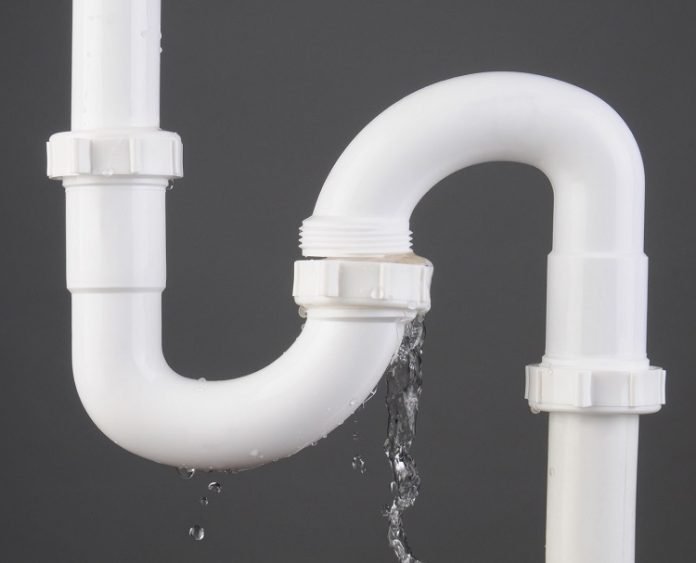Last Updated on August 8, 2025 by Rida Hamid
One of the biggest plumbing disasters you can encounter is a burst pipe. Left unattended, a burst pipe can flood substantial amounts of a house, causing thousands of dollars worth of damage in the process. As such, when a pipe bursts, you must take action immediately.
The question is: what to do when a pipe bursts in your home. What are the steps to take? There are many, and we’re going to discuss them below.
Without further ado, here’s how to counteract burst pipe water damage.
Table of Contents
1. Turn Off Your Electricity
The very first thing to do after you’ve encountered a burst water pipe is to turn off your electricity. This is vital, as a burst water pipe could cause water to make contact with your electrical system, creating an electrocution hazard. Only by shutting the electricity off can you protect yourself entirely.
If you have access to it, make your way to your breaker box and flip off the large switch. If you must go through the water in order to get to your breaker box, you should instead turn the electricity off by flipping the switch on the main on the exterior of your home.
2. Turn Off Your Water
Next, you’re going to need to turn off your water supply. Until you do, water will pour out of the damaged area of the pipe, causing more and more damage as time passes.
In order to turn off your water supply, you’ll need to locate your main water valve. This is generally located on the exterior of the home, usually within 5 feet of the municipal water meter.
Once you find it, simply twist it as far as it can go until the water has shut off entirely. Then, go inside and test a faucet to ensure that it is, indeed, shut off.
3. Save Any Possessions That You Can
Odds are, the burst pipe caused water to soak some of the possessions in your home. If you act fast, you might be able to save some of these.
So, as soon as you turn off the water and electricity, make your way to the affected area and move the possessions that made contact with the water. Then, bring them to a dry spot and allow them to dry naturally.
Oftentimes, water-damaged items can be restored and salvaged. You just have to tend to them as soon as possible.
4. Dry the Area
Once your possessions have been moved out of the affected area, you’ll need to start drying said area. In order to do this, you’ll need a few different pieces of equipment.
This equipment includes, at a minimum, a bucket and a mop. Note, though, that an air mover and a dehumidifier will likely be needed as well.
First, use the bucket to remove as much standing water as possible. Then, once you’ve got the water down to a reasonable level, use the mop to sop up any additional water.
At this point, standing water will be gone. However, the affected area will still be quite damp. As such, you’ll need to turn on the air mover and dehumidifier in order to dry everything out.
Do this in a timely enough manner, and you should be able to prevent mold from growing. Wait a day or two, and mold is almost certain to crop up in several areas.
5. Hire a Public insurance adjuster
Water damage is a common issue faced by most homeowners. It can happen from a pipe burst, broken pipe, or leaking roof. If your home has been flooded due to an exterior pipe burst resulting in water damage, you should consider filing an insurance claim. Sometimes insurance companies don’t cover insurance due to water damages. If you’ve had your property damaged by flooding, it’s probably a good idea to hire a Public insurance adjuster to restructure the claims process.
6. Call in a Plumber
Next, you should call up a plumber. After all, you have to get this pipe fixed. And, unless you’re highly experienced with plumbing work, you’re not going to be able to do it on your own.
An experienced plumber will be able to replace the affected pipe, getting your plumbing system up and running again. In addition, your plumber will have a chance to inspect the rest of your plumbing system, allowing you to find small issues that could be big issues in the future.
7. Call a Water Damage Restoration Service
Finally, once the damaged pipe has been fixed, you should call up a water damage restoration service. This is a service wherein water damage restorationists inspect for water damage and then set out to fix said water damage.
This is necessary for a variety of reasons. For one, unchecked water damage will cause components of the house to deteriorate more rapidly than they would otherwise. Therefore, by not fixing it now, you’ll be costing yourself even more money in the long run.
There’s also the issue of mold. Mold is attracted to wet and moist areas. Therefore, it will eventually start to grow in the spots where the pipe burst. In order to prevent mold growth in these areas, they must be restored.
Finally, water-logged construction materials will lower the value of your home. So, if the damage isn’t fixed, your home will sell for much less than it would otherwise.
Note, even if you think there’s no water damage present, there still could be. As such, it’s ideal to have it inspected by a seasoned professional.
Burst Pipe Water Damage Can Be Combatted
When push comes to shove, burst pipe water damage can be combatted. The key when dealing with water damage from a pipe burst is to act quickly and follow each step carefully. As long as you do this, you should be able to keep the damage to a minimum.
Searching for similar info? Our website has you covered. Check out our other articles right now!
Apart from this, if you are interested to know more about 5 Home Improvement Tips to Prepare for the Winter Season then visit our Home Improvement category.



























